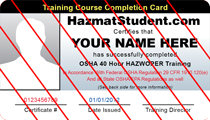| Quick Tips | Preventing Heat Stress |
When sun exposure, extreme heat or high humidity cannot be avoided in a work environment, workers should take the following steps to help prevent heat stress:
- Drink water frequently. (Approx. 1 cup every 15 – 20 minutes)
- Avoid drinks with large amounts of caffeine or sugar.
- When in extreme conditions, take more breaks in shaded or cool areas, if possible.
- Wear light-colored, loose, and breathable clothing, such as cotton.
- Schedule heavy work during cooler parts of the day.

- Monitor yourself and co-workers for signs of heat stress, which may include: rash, muscle cramps, fainting, dizziness, nausea, weakness, fatigue, pale or flushed complexion, heavy sweating, fast and shallow breathing, headache and more.
- Be aware that protective clothing or PPE may increase your risk of heat stress.
Prevention is a vitally important part of worker safety. Heat-related occupational illnesses and injuries, such as heat stroke, heat exhaustion, heat cramps, and heat rashes can be avoided by planning ahead and implementing prevention measures.
For additional information, OSHA offers a thoroughHeat Illness Prevention Training Guide which provides employers with lesson plans and interactive prevention training that can be used in the workplace.



